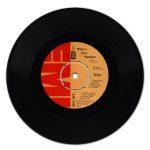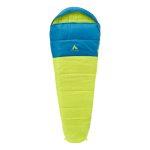Guitar Size Chart by Types of Guitars: what size do I need?
Why is a good guitar size important? The size of different guitars kinds varies.
Electric guitars are substantially smaller than steel-string acoustic and nylon-string classical guitars; nonetheless, you must consider the added weight. Electric guitars are smaller but made of solid wood, making them slightly heavier. Acoustic guitars are larger but hollow. There is a wide range of sizes available for guitars, and the playability of your particular instrument is significantly impacted by its dimensions (skip straight to the Guitar Size Chart).

It should be obvious why matching the correct size guitar to each individual is vital if you’ve ever watched a tiny kid struggle to play a full-sized guitar. The scale length is the most important factor to consider when looking for the correct guitar size.
Adults guitar size recap
Adults typically feel at ease playing full-size guitars between 40″ and 41″. Consider a 40″ size guitar or smaller if you are small. Consider a 41″ size guitar if you are exceptionally tall.
Jump right into the Frequently Asked Questions
Related: Violin Size Chart – What size violin do I need?, Crochet Hook Size Chart – A Handy Conversion Guide, Piano Dimensions and size by type
Table of content
- Different Kinds of Guitars
- How to measure a guitar?
- How Many Different Body Sizes Are There for Guitars?
- Electric Guitar Size Chart and Characteristics
- Acoustic Guitar Size Chart and Characteristics
- Classical Guitar Size and Characteristics
- What Exactly Is A Full-Sized Guitar?
- Should You Get Your Child a Regular-Sized Guitar?
- Frequently Asked Questions
Different Kinds Of Guitars
Related: Cornhole Board Size and dimensions guide
Suppose you wish to perform in a range of genres. In that case, it is vital to have many guitars, typically of different varieties, which is why many guitarists possess more than one guitar (rock, classical, and country music all require different types of guitar).
However, when you are first beginning to study guitar, selecting one style of guitar is preferable and staying with it until you have learned the fundamentals of playing the instrument.
It is suggested that beginners begin their guitar studies on a classical (nylon string) guitar because of the instrument’s striking resemblance to the first guitar. The most common varieties of guitars are:
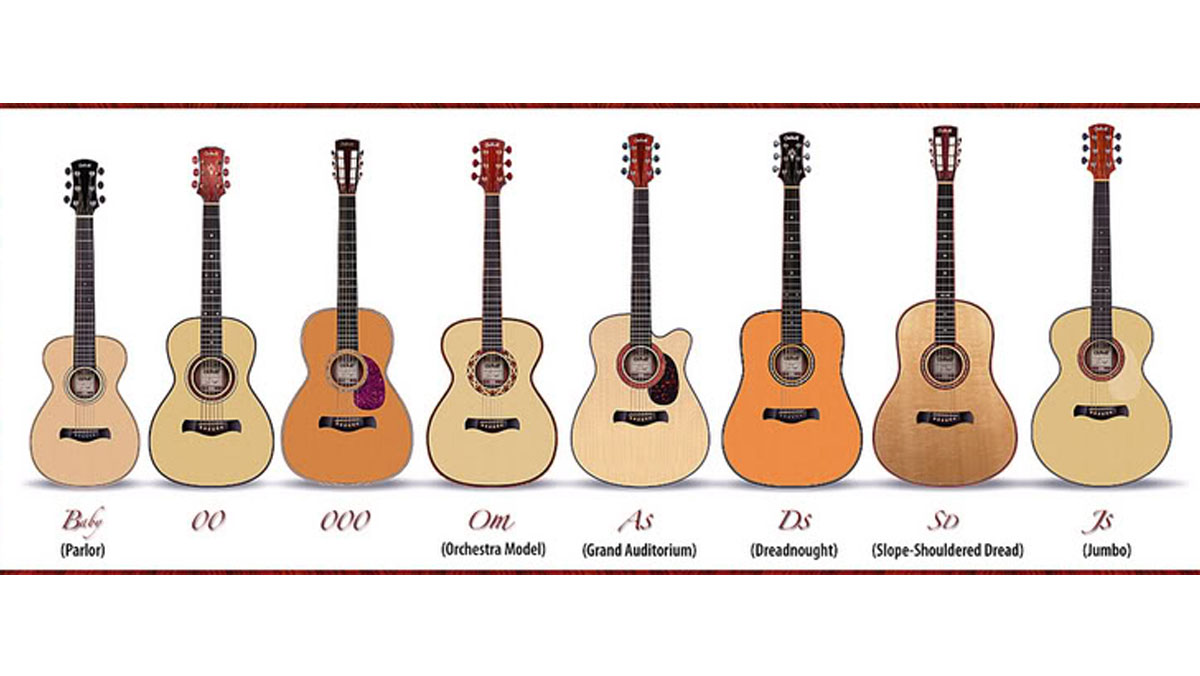
Classical Guitar (Nylon String)
The nylon strings on the classical guitar give it a very warm, mellow tone with a long sustain. It is often a little bit smaller than a steel-string acoustic guitar.
Steel strings should never be used on a classical guitar because they might harm the neck, which is how this kind of guitar is played.
It is traditional to play the classical guitar by plucking the strings with the fingernails, and very intricate and emotionally charged melodies characterize the music produced in this technique.
Because a significant portion of the repertoire for classical guitar is composed using notation, it is necessary to learn how to read notes.
Acoustic Instrument (Steel String)
Acoustic guitars don’t require an amplifier since their resonating body cavities amplify the strings’ sound. This kind of guitar is known as a steel-string acoustic guitar.
Acoustic guitars with steel strings are often used for accompaniment since they are louder than their nylon-stringed counterparts. Steel-stringed acoustic guitars are also more durable. They are also capable of being used for one-on-one musical performances.
Although the pick (plectrum) is the instrument of choice for most players of steel string guitars, a significant number of guitarists also use fingerstyle methods when playing these guitars.
Electric guitars
The sound produced by an electric guitar is not due to the instrument’s natural ability to produce sound; rather, it is the consequence of the sound being amplified by electrical means. In addition to an electric guitar, you will also need to get an amplifier.
Many electric guitars designed for beginners come with a tiny practice amplifier, but you may also purchase an amplifier separately. Accessories, such as a variety of effects pedals, are also used by electric guitarists.
Parts of a guitar (to find the right size)
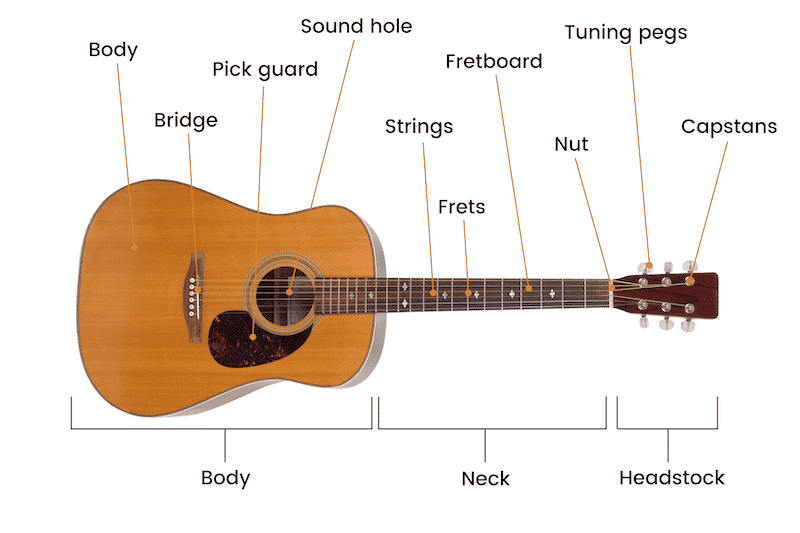
How to Measure a Guitar?
Related: Printable Ruler In Cm: Make it Yourself Pool Table Size Chart And Sizing: Dimensions by type and room
There are primarily two methods for measuring a guitar:
- The first method measures the guitar’s overall length from end to end. The scale length can be measured as a second method.
- Knowing the total length is useful, but understanding the scale length is significantly more important.
The Total Length of a Guitar
To determine a guitar’s overall length, we measure from the top of the headstock to the bottom of the body. Measure the distance between the strings using a tape measure. The entire length is measured from the body’s outer side to the tip of the headstock.
A “full size” guitar’s overall length can range from 36 inches to well over 40 inches.
Comparing guitar sizes by total length is not useful, as this parameter doesn’t affect the way you play the guitar
Guitar size: the Scale Length of a Guitar
Checking a guitar’s scale length is a more accurate method of measurement. Because it affects how a guitar feels when you play it, the scale length is the most crucial measurement for a guitar. Even a slight scale length change can have a different sensation when playing.
From the bridge to the nut of the guitar, you measure the scale length of the instrument.
How Many Different Body Sizes Are There For Guitars?
Related: Knitting needle size chart by type of needle (including size conversion)
Have a look at some of the more typical guitar sizes, given that there is such a wide range of options when it comes to guitar dimensions. You may have a better idea of what kind of guitar will work best for you if you are familiar with the normal dimensions of the various models.
Electric Guitar Size Chart and Characteristics
Related: Pickleball Court Size Dimensions by type in foot and meters
| Age | Height | Size |
| 5 – 10 years | 80 – 125 cm / 31 – 49 inch | ¾ size |
| 10+ years | 125cm+ / 49+ inch | Full size |
- Having a more compact size than acoustic or classical instruments
- Excellent for many types of music, including rock, metal, pop, and country
- It consists of steel strings, which may be painful to the fingertips of younger players.
- May be heavy, depending on the model.
Acoustic Guitar Size Chart and Characteristics
Related: Roller Skate Size Chart for Adults and Children
| Age | Height | Size |
| 5 -12 years | 100 – 120 cm / 39 – 47 inch | ¾ size |
| 12 – 15 years | 120 – 165 cm / 47 – 64 inch | Small body |
| 15+ years | 165+ cm / 64+ inch | Full body |
- Excellent for songs in the folk, pop, country, and slow rock genres
- It consists of steel strings, which may be painful to the fingertips of younger players.
- It offers a strong and crisp tone that is ideal for strumming chords.
- Slim yet cumbersome in appearance
Taylor Acoustic Guitar
Taylor guitars are available in five unique body shapes and designs. The following is a fast reference for our shapes.
The body dimensions of a guitar are essential for two primary reasons: 1) They assist in shaping its voice; 2) The resultant “fit” concerning your body will affect the physical comfort of playing.
The five body designs offered by Taylor span from the tiny Grand Concert to the large and sculpted Grand Orchestra. Compare guitar body sizes, curves, and depth against your body and your picking arm stretched over the bottom.
Smaller guitar bodies generate a more controlled sound with more upper-end chime, while bigger bodies are louder with greater low-end depth.
However, do not dismiss a body type too quickly before playing it. You may be shocked by a smaller body’s tone, depth, and loudness, or a bigger body’s responsiveness.
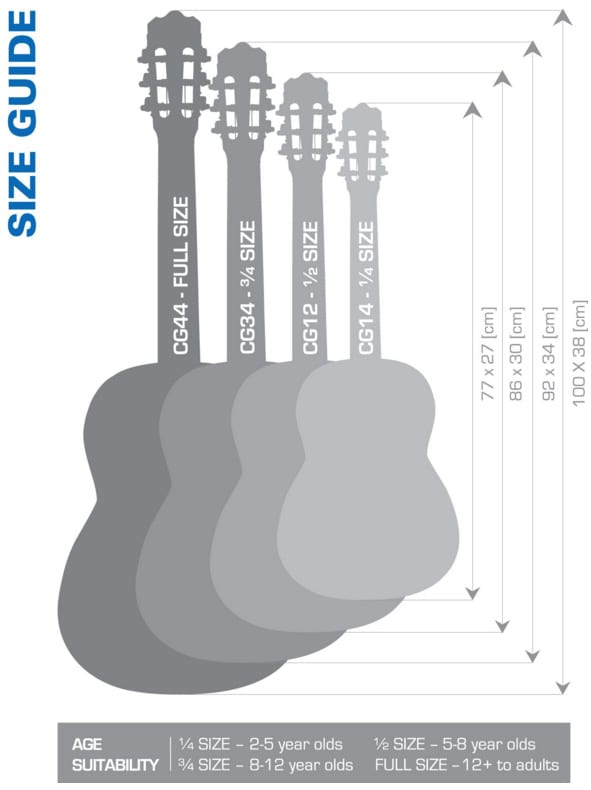
Classical Guitar Size and Characteristics
What Size Classical Guitar Should You Buy?
A classical guitar is made with nylon strings and is typically a beginners guitar
Related: Average hand size charts for men, women and children Golf Glove Size Chart for adults & kids: How to know the right size?
| Age | Height (full length) | Size |
| 2 – 5 years | 75 – 100 cm / 29 – 39 in | ¼ size |
| 5 – 8 years | 100 – 125 cm / 39 – 49 in | ½ size |
| 8 – 12 years | 125 – 165 cm / 49 – 64 in | ¾ size |
| 12+ years | 165+ cm / 64 in | Full size |
Full-size classical guitars have wider necks than other varieties. We suggest that you get your kid a narrow-neck classical guitar if their hands are on the smaller side because:
- It is excellent for the music of classical, flamenco, and Spanish traditions.
- The smallest size, the 1/4 size, is available.
- It is soft on the skin, making it an excellent option for young children.
- It sounds mellow and mild and is not as loud as an acoustic instrument would be.
What Exactly Is A Full-Sized Guitar?
Related: Nerf Gun Size and Specs Guide
Full-size guitars are typically 38 inches long with a scale length of 25.5″. All you need to do to determine if your guitar is full-size or not is to measure the scale length. In most circumstances, a guitar with a scale length of roughly 25 inches is considered a full-size instrument.
Now that we’ve covered the two most common methods of guitar measurement, let’s move on to full-size instruments. The reason for the importance of this phrase is that guitar sizes are based on full-size instruments.
The fundamental issue here is that there is no uniform number for full-size guitars, and it varies by model and manufacturer. A normal Fender Stratocaster, for example, is a full-size guitar, but the same is true of the Gibson ES-335.
Should You Get Your Child a Regular-Sized Guitar?
Related: Squishmallow Size: How many Different Sizes Are There?
There are other choices available than purchasing a guitar sized appropriately for a youngster, even if it would make perfect sense. Purchasing a guitar of standard size is another choice you have.
Some guitar instructors are certain that bigger guitars would slow down a child’s development as a guitarist. Other instructors will tell you that youngsters can learn efficiently on guitars that are greater in size.
One of the many advantages of purchasing one is that your kid will never outgrow a full-sized guitar. That means you won’t have to purchase another guitar in the future, and there’s a good chance your kid will keep playing the one they started on for the rest of their lives.
In terms of sound quality, full-sized guitars are clearly superior to their scaled-down counterparts. A 1/4 or 1/2-sized guitar has a quite monotonous sound, and as your child’s ear grows, they run the risk of losing inspiration due to a guitar that has a monotonous sound.
Learn more about different guitar sizes and types (video)
Frequently Asked Questions
1. How many sizes does a guitar have?
Guitars are manufactured in 4 standard sizes, and the dimensions of their individual components tend to be proportional.
- 41″ Full-Size:
A very popular guitar size globally. - 40″ size:
About 15% smaller than full size guitars with a thinner body - 38″ Size:
20% smaller than full-size guitars with a 2-inch shorter neck. This size is best for children or adults with shorter arms. - 36″ Size (travel version or second guitar)
25% smaller than a full-size guitar with a 2-inch shorter neck. Perfect for smaller children or as a second guitar for travel

2. What size is a 3/4 guitar?
3/4 guitars are better suited to the height of children aged 8 to 12 who are learning to play guitar. However, adults may also find playing a 3/4 guitar comfortable, particularly if they struggle to reach lower tones or higher frets on normal-size guitars. Smaller hands are particularly affected.
3. Is a 38-inch guitar full-size?
The length of a standard full-size guitar is around 96.5 centimeters (38 inches), while the scale length is approximately 25.5 inches (64.8cm). This varies by brand and instrument type.
4. What guitar size is ideal for children?
The ideal guitar size for children is a 3/4 or 1/2 size guitar. While beginners often start with the standard acoustic guitars, these full-sized ones may be overwhelming for children. Instead, to help children play comfortably, they can start with 3/4 and 1/2-sized guitars. Nevertheless, it’s okay to buy a guitar that is a bit big for your child since children grow out of smaller guitars quickly.
5. Which guitar is best for beginners?
An acoustic steel-stringed guitar is an ideal instrument for beginning guitarists. Your own selection will determine the body form of the guitar that best suits your playing style.
6. What is the difference between a full-size and 3/4 guitar?
The Fundamental Difference between a Full-Size Guitar and a 3/4 Guitar is in the total length and the scale length. A full-size guitar measures around 40 by 15 inches, but a 3/4 guitar measures 36 x 13 inches.
A full-sized guitar’s scale length is greater than 24 inches, whereas a 3/4-sized guitar’s scale length is between 20 and 24 inches.
Key specifications
| ¾ guitar size | Full size guitar size | |
| Body shape | ¾ classical | Classical |
| Overall size | 36 x 13 inches | 40 x 15 inches |
| Scale length | 24 inches or less | 24 inches or more |
| Frets | 18 or less | 19 or more |
7. What size guitar do kids need?
The perfect-sized guitar for kids starts from 1/4 and goes up to a full-sized guitar, by age. Any easy overview below.
- 0-5 years old: 1/4-sized or ukulele
- 5-7 years old: 1/2 sized
- 7-12 years old: 3/4 sized
- 12 years and older: Full sized:
Conclusion
Guitars are available in sizes suitable for people of all ages interested in learning to play the instrument.
Whether a youngster or an adult, you should know that guitars come in many varieties, such as acoustic guitar, bass guitar, classical guitar, and others that you can choose to play.
Also, maintain a positive attitude because before you realize it, you will completely forget all that has been spoken and will move on to learning your first chords and scales.
Remember that this is just the beginning of your musical adventure since many people can relate to the difficulties of recognizing the different sizes of guitars.
Moreover, whether you are a seasoned guitarist or are just getting started on the instrument, we hope you have found this article useful.
If you have questions, comment below.
Picture in this post is by Simon Weisser on Unsplash
Related to Guitar Size Chart
- O’Neill Wetsuit Size Charts

- Poker Chip Size Guide

- Baseball Card Size Guide

- Bocce Ball Court Size and Dimensions

- Pool Cue Length – Why it is Important?

- Helicopter Sizes and Different Types

- Chessboard Dimensions: What Is The Size Of It?

- Vinyl Record Size and Dimensions

- Ping-Pong Ball Size Chart

- Dolls Size: What Are the Different Sizes of Dolls?

- Bowling Ball Size and Dimensions

- What is the Size of a Playing Card?

- Basketball Size Guide

- Volleyball Size Chart

- Beer Pong Table Dimensions

- Tent Size Chart for Road, Wedding…

- Jet Ski Size: Which Size Should You Go For?

- Sailboat Size Guide for Beginners and PROs

- Rooftop Tent Size Chart

- Martial Arts Ring Sizes

- Portable Folding Chair Size for Camping, Sports…

- Mammut Sleeping Bag Sizes

- McKINLEY Sleeping Bags Sizes

- Musical Ensemble Size and Structure









